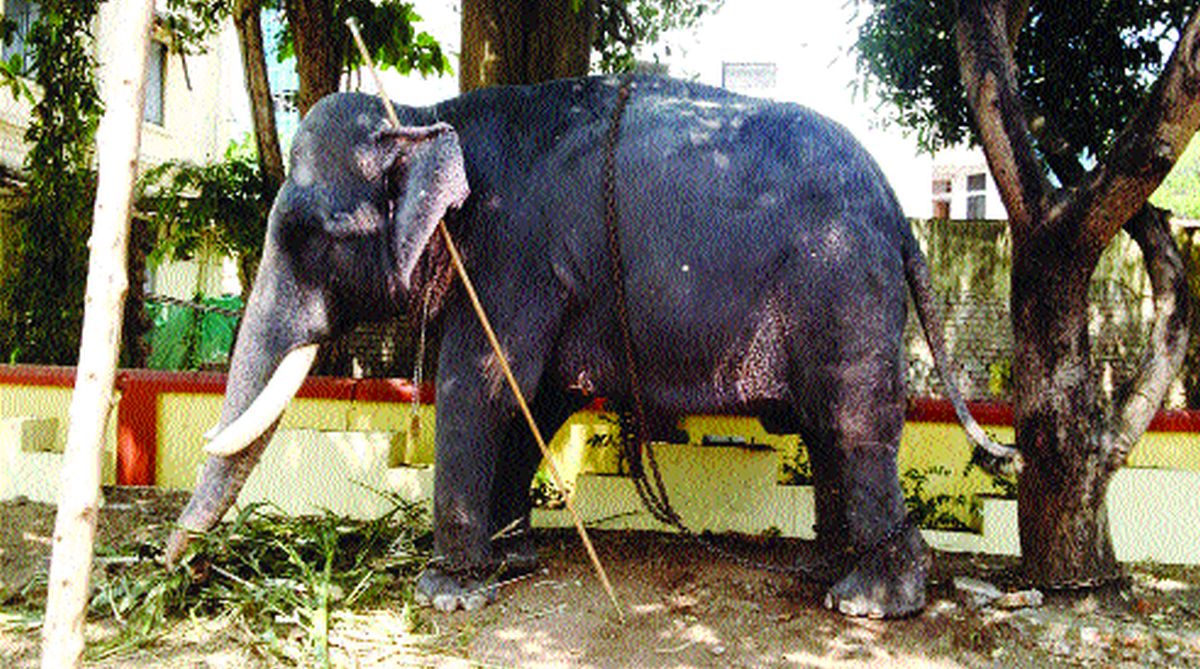50 wild elephants electrocuted in Sri Lanka this year
Around 50 wild elephants have so far been electrocuted by unauthorised electric fences or wires in Sri Lanka this year, the Ceylon Electricity Board (CEB) said on Monday.

From Betla we went a little beyond, to Lat and Kuzrum, mainly in the hope of being able to see chital in large herds at the village tank, and perhaps even elephants ~ in April, Betla is too dry for elephants and they move towards the Koel. But the chital did not oblige us, though they were there, and so we decided to try for whatever came at a bend in the Koel, where there was still water.
The Koel is one of the most charming rivers in Bihar. During the rains it must be a torrential river, and even in summer the width and sweep of its bed of clean sand and rock, bordered with tree forests, was impressive. But what immediately held our attention were the animal tracks we found on descending to the river bed.
Advertisement
A herd of elephants had just crossed over to the further bank, as their still wet footprints showed, and since there was no other water close by, there was a slim chance that this herd, or some other elephants, would come to this mile-long chain of pools again. And superimposed on the fresh footprints of the herd were the even fresher pugs of a tiger. There was a baby elephant in the herd, as the tiny footprints clearly showed. Had the tiger been attracted by this little one?
Advertisement
A sufficiently bold tiger will kill an elephant calf if it can, and apparently likes elephant meat almost as much as it does pork. On a flat, wide river-bed where the herd could turn quickly and circle it.
I suppose no tiger would care to try such a thing, but cats both great and small will follow their quarry even if there is little chance of gaining anything thereby. I noticed that the tiger had not merely come to the water to drink; it had followed the herd well beyond the water and then turned back.
We waited until evening but saw nothing. But I liked this bend in the Koel so much and thought it such a likely spot for wild animals that we spent the next day also there, from early morning till afternoon. This time I did see something worth a long wait, though my companions, who were further up the steep bank of the river, missed the sight.
A peacock with a gorgeous train came sailing on outspread wings across the riverbed, with its flowing train spread a little by the back was of its own passage, and brilliantly iridescent in the sun; there was a high rock three-quarter way across the river-bed with a flat top, and I thought the bird would land on it, but it merely gained an impetus by kicking against the flat rock and sailed across to the further bank.
On the way back to the rest-house we saw an elephant at last, a massive, medium-sized lone bull with short, broken tusks, and he saw us too and made off. We went on as if we were going away, and then turned and came back to find him on the high ground flanking the road, and I got my picture. Then it was his turn to pretend to go away, and reappear on the road ahead of us.
Seldom does one enjoy blank days in one’s wildlife observation, but at this spot in the Koel that is possible, and it is such a likely place for seeing animals that not all days will be blank.
This was published on 16 February 1969
Advertisement